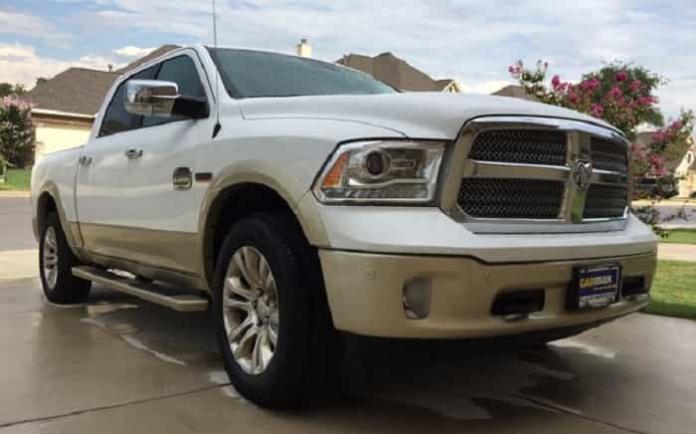I had always been diesel-curious, but it wasn’t until spending four and a half years of my military career zipping along Germany’s Autobahns in turbo-diesel powered cars that it became a lifestyle choice. I knew the advantages diesel offers in fuel economy and low-end power, so I set my sights on a new VW Passat. My 2007 6-speed Passat wagon in Germany was great on fuel, cut the air like a knife, and felt solid and luxurious. So how did I end up with a Ram 1500 as our family car?
After a few months of owning a 2014 Passat TDI in the States, however, I knew I had made a mistake. The materials, trim, fit, and comfort were not the same as the German version. Power flowing through the automatic transmission felt subdued and strangely disconnected. Worst of all, the navigation and entertainment system were so slow, unresponsive, and generally frustrating that they deserve an article on their own. As you can imagine, I was one of the first to sign up for the VW “Dieselgate” buyback.
What I really wanted was something both utilitarian and economical, like my German Passat wagon. One Saturday, I was restless at home and decided to poke around a CarMax to see what options I had. I really like strolling through CarMax because you can try out many different types of vehicles of just about any make. My 6’9” of height requires me to have to slide the seat all the way back in any vehicle, so it is not easy to find a vehicle in which I still have enough room in the back seat for my kids (who happen to have legs). I settled on two very different choices that looked promising: a hybrid sedan and a Ram 1500 EcoDiesel. The trade offer came back much higher than I expected, so now I had something to tell my wife. I told the salesman to hold the hybrid, the less expensive of the two.
While discussing our options with my wife, she told me to hold the Ram 1500 as well while we settled on the following criteria for our next vehicle:
1. It must fit the whole family comfortably;
2. It must get at least 25 mpg mixed;
3. It must be able to tow a small trailer or boat; and
4. I have to be able to use it as a daily driver.
Flash back two years to when we first returned to the United States. Jobless and exhausted from a lot of personal drama, we did the only sensible thing we could and bought an RV to tow behind our minivan. We proceeded to take our family on a 2-month road trip visiting family and friends while exploring the West Coast. We became addicted to the freedom we felt while on the road. We didn’t like the terror we felt while towing at max capacity, however, especially while being passed by 18-wheelers.
While visiting family in California, our new Town & Country had a transmission problem (thankfully not due to towing). While we waited for the van to be diagnosed, we were first introduced to the EcoDiesel Ram. We drove it and loved it. We even considered trading the van in for the Ram 1500, but there was no way a jobless military veteran could afford a brand new $60k truck. We got the van fixed and continued our journey with no further vehicle issues Since that time, we had always held the 1500 EcoDiesel as an option in the back of our minds, but our circumstances always seemed to push it away. Because I had never owned a truck before, a sedan seemed much more practical (and a lot less expensive). I was wrong.
There are those who disparage the small diesel based on towing capacity or power, but my Laramie Longhorn works for me as a daily driver with some hauling capability and luxury-level appointments. Even the basic trim levels, however, offer a lot of thoughtful features.
I am not looking to drag race or tow a 15k pound fifth wheel. I might make a few trips to Home Depot this year, tow a small trailer a few weekends, take a small boat to the lake, or help friends move. I don’t need any more muscle for any of these things than what my ½ ton provides. For this husband and father of three, the right choice was turning the family sedan into a full-sized truck.





